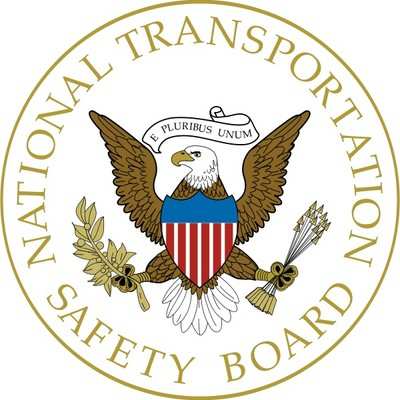The Pilot Stated “We Got A Problem” And Was The Final Recorded Transmission
Location: Christoval, TX Accident Number: CEN24FA064
Date & Time: December 14, 2023, 12:18 Local Registration: N188PC
Aircraft: Pilatus PC-12/45 Injuries: 2 Fatal
Flight Conducted Under: Part 91: General aviation - Personal

On December 14, 2023, about 1218 central standard time (CST), a Pilatus PC-12/45, N188PC, was destroyed when it was involved in an accident near Christoval, Texas. The pilot, one passenger, and three pets were fatally injured. The flight was conducted under 14 Code of Federal Regulations Part 91 as a personal flight.
Federal Aviation Administration (FAA) air traffic control (ATC) recordings and automatic dependent surveillance – broadcast (ADS-B) data revealed that the airplane had departed Jacksonville Executive at Craig Airport (CRG), Jacksonville, Florida, about 0751 CST, and was en route to San Angelo Regional Airport (SJT), San Angelo, Texas. The pilot was receiving radar vectors for the RNAV (GPS) runway 36 approach to SJT and was level about 4,300 ft mean sea level (msl). About 1211, the pilot reported to ATC that the tops of the clouds were variable between 4,100 ft and 4,400 ft msl.
At 12:17:24, ATC stated, “turn right heading 030 maintain 4,300 [ft msl] until established on the final approach course, cleared RNAV 36 approach”
At 12:17:32, the flight track passed through the final approach course and continued a shallow right turn
At 12:17:36, the pilot stated “we overshot it”
At 12:17:39, ATC stated “I know that’s why a gave you a 030”
At 12:17:40, the flight track began a right descending turn about 1,000 fpm
At 12:17:44, the descent rate was about 5,000 fpm and the right turn steepened
At 12:17:47, the pilot stated “we got a problem” and was the final recorded transmission from the accident airplane
At 12:17:49, the flight track continued in a steep right turn with a descent rate about 15,000 fpm
The airplane impacted trees and terrain about 15 miles south of SJT and the wreckage debris was aligned on a 100° magnetic heading. The initial impact point was defined by a small tree that was cut at a 24° angle slanted down toward south and surrounded by small wreckage debris, which included pieces of the right wing tip and a green navigation light. The initial ground impact crater was immediately adjacent to the tree, measured about 1 ft deep by 20 ft long, and contained a lot of small wreckage debris and one propeller blade. The main wreckage was located about 500 ft to the east of the initial impact area. A large section of the left wing remained mostly intact and was found on the right side of the debris field near the main wreckage. The area between the initial impact and the main wreckage contained a significant amount of airplane parts and wreckage debris. The main portion of the engine was located about 870 ft from the initial impact area. The farthest piece of wreckage was a main
landing gear tire that was located about 1,320 ft from the initial impact. Several portions of the wreckage sustained thermal damage and contained black soot.
The engine components exhibited torsional deformation and rotational signatures. The propeller impact-separated from the engine with the propeller shaft and associated reduction gearbox bearings still attached. The cylinder, piston, and feathering spring assembly impactseparated from the propeller hub and were found near the propeller assembly about 50 ft from the engine. The propeller assembly and two blades remained attached and two of the four blades impact-separated from the propeller assembly. One blade fractured from the blade retention pocket and was found in the initial impact crater. The other blade fractured at the shank and was found just east of the initial impact crater in the debris field. All four blades exhibited chordwise rotational scoring, leading edge gouges, and compound bend and twist signatures.
The archived meteorological information and the accident pilot’s report to ATC revealed that the airplane was likely in instrument meteorological conditions (IMC) during the approach. There was potential for turbulence in clouds, no icing below 11,000 ft, and no significant precipitation noted.
Maintenance records revealed that the airplane had undergone an annual inspection which was completed on November 22, 2023, at aircraft total time 3,990.1 hours. The pilot’s electronic flight logbook revealed that in the last year he had accumulated about 111 hours in the accident airplane, of which 16.3 hours were logged in actual IMC.
In 2020, the airplane was upgraded with Garmin avionics and components that included two Garmin G600TXi touchscreen flight displays, two Garmin GTN750Xi flight navigators, a Garmin GI275 electronic attitude indicator, and a Garmin GMC 605 autopilot controller. These devices were located in the wreckage and were sent to the NTSB Vehicle Recorders Laboratory for examination and data extraction.
The wreckage was retained for further examination and testing.
 Aero-News: Quote of the Day (10.27.25)
Aero-News: Quote of the Day (10.27.25) ANN's Daily Aero-Linx (10.27.25)
ANN's Daily Aero-Linx (10.27.25) NTSB Prelim: Lancair 320
NTSB Prelim: Lancair 320 Airborne Programming Continues Serving SportAv With 'Airborne-Affordable Flyers'
Airborne Programming Continues Serving SportAv With 'Airborne-Affordable Flyers' Airborne-Flight Training 10.23.25: PanAm Back?, Spirit Cuts, Affordable Expo
Airborne-Flight Training 10.23.25: PanAm Back?, Spirit Cuts, Affordable Expo



